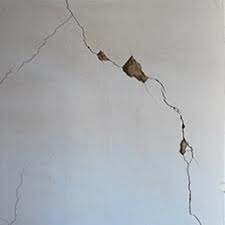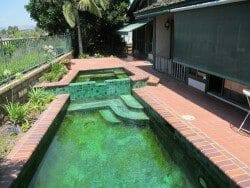6 Most Common Swimming Pool Issues
Home » Pools and Spas »
For many homeowners, including our families, a swimming pool is a source of joy, relaxation, and family fun. However, maintaining this aquatic oasis requires attention to detail and a proactive approach to tackle the array of issues that can arise. We’ve outlined the most common issues people run across when owning and maintaining a pool so you can stay on top of it and enjoy your pool time.
There are estimated to be 10.4 million residential swimming pools in the United States! The average swimming pool holds about 19,000 gallons of water. That means there is at least one hundred ninety-seven billion six hundred million gallons of pool water that needs to be maintained in residential pools in the USA! That’s a lot of water.
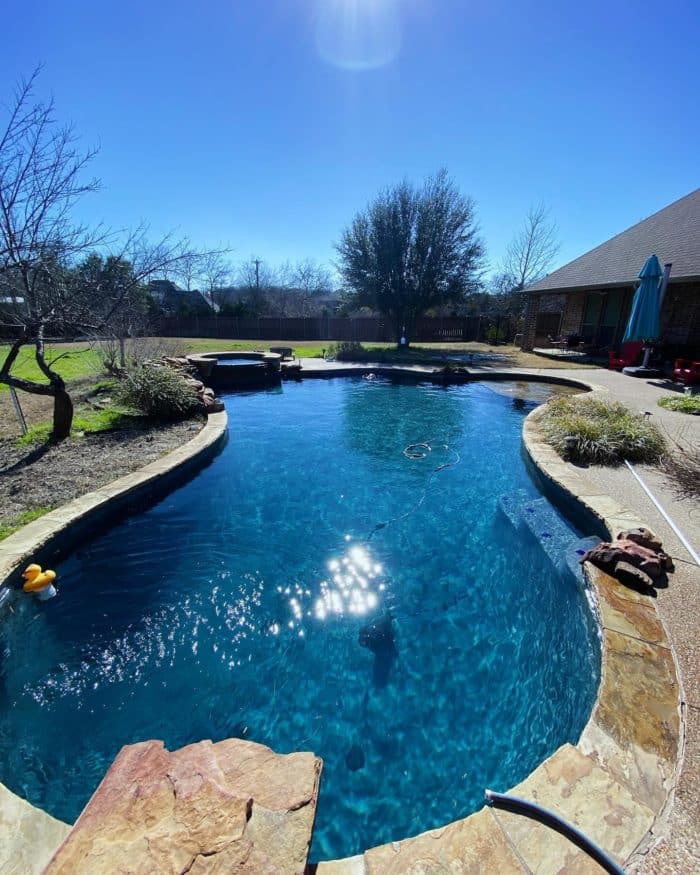
According to Poolresearch.com on average, general swimming pool cleanliness related maintenance costs homeowners about $100 monthly. Things can get expensive very quickly if a pool is not being properly maintained, and pools tend to get out of control in a short amount of time when they are neglected.
1. Water Quality Woes
Water quality is paramount for pool maintenance, directly affecting both the pool’s aesthetics and the swimmers’ health.
- Algae Invasion: Algae growth is a common nuisance, quickly turning a pool from a clear blue to a murky green. Algae thrive in pools due to imbalanced water chemistry, insufficient circulation, or lack of cleaning. Regularly checking chemical levels and ensuring proper filtration can keep algae at bay. Brushing the pool walls and vacuuming the bottom are also essential to remove any existing algae.
- Cloudy Conditions: Murky water obscures visibility, signaling issues like chemical imbalance, inadequate filtration, or environmental factors like heavy rains or high swimmer load. If this happens, first check and correct the chemical balance. Ensure the filtration system runs efficiently, and consider shocking or using a clarifier to coagulate small particles for easier filtration.
- Chemical Balancing Act: Keeping the pool’s pH, chlorine, and alkalinity levels within the correct ranges is crucial. Imbalances can lead to eye irritation, equipment corrosion, and ineffective sanitization. Regular testing with a reliable pool test kit and adjusting chemicals as needed. Stabilize the pH levels between 7.2 and 7.6, maintain chlorine levels for sanitization, and monitor total alkalinity to protect the pool equipment.
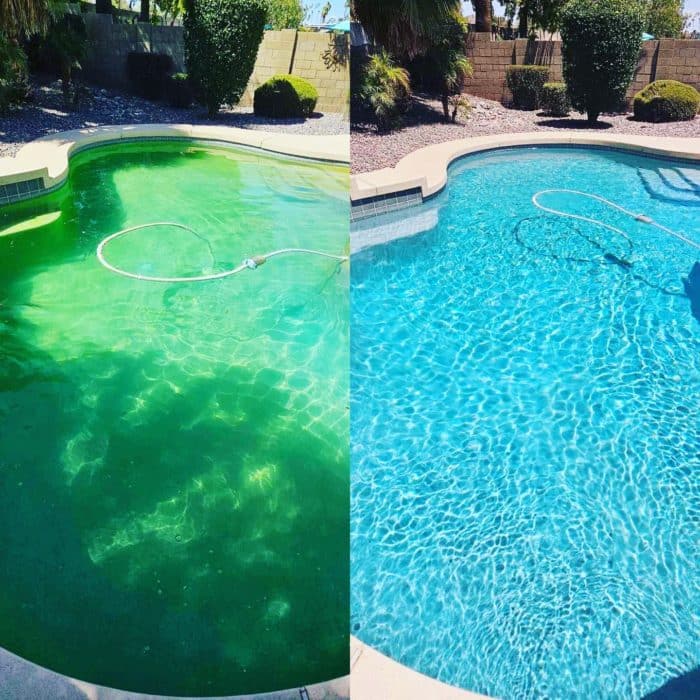
2. Poor Filtration and Circulation
Effective water movement is essential for a clean and healthy pool.
- Filter Fiascos: A clogged or malfunctioning filter system can lead to numerous problems, including cloudy water and algae growth. Regular cleaning or replacement of filter media ensures efficient operation.Clean or replace the filter media as per the manufacturer’s guidelines. For sand filters, backwashing and replacing sand when necessary are crucial steps.
- Pumping Problems: An underperforming pump compromises water circulation, affecting both water quality and temperature. Maintenance checks and timely repairs or replacements can prevent circulation woes. It is recommended that the pump runs at least 8-12 hours daily for optimal circulation.
3. Structural Integrity and Surface Damage
The physical condition of the pool itself is vital for both aesthetics and safety.
- Leak Landmines: Undetected leaks can lead to significant water loss and potential damage to the pool’s surroundings. Regular inspection for signs of leaks can save water and avoid extensive repairs. Leaks can occur in the pool structure or plumbing.
- Cracking Concerns: Temperature fluctuations and ground movement can cause cracks in the pool‘s structure. Early detection and repair are crucial to prevent water leakage and structural failure. Small cracks can be sealed with a pool putty or silicone. Larger structural cracks might require professional resurfacing and possibly reinforcement.
- Liner and Tile Traumas: Wear and tear can damage pool liners and tiles. Keeping an eye out for tears or damage and addressing them promptly can prevent further deterioration. For liners, patch kits can repair small tears. Tiles may need re-adhesion or replacement for loose or broken pieces.
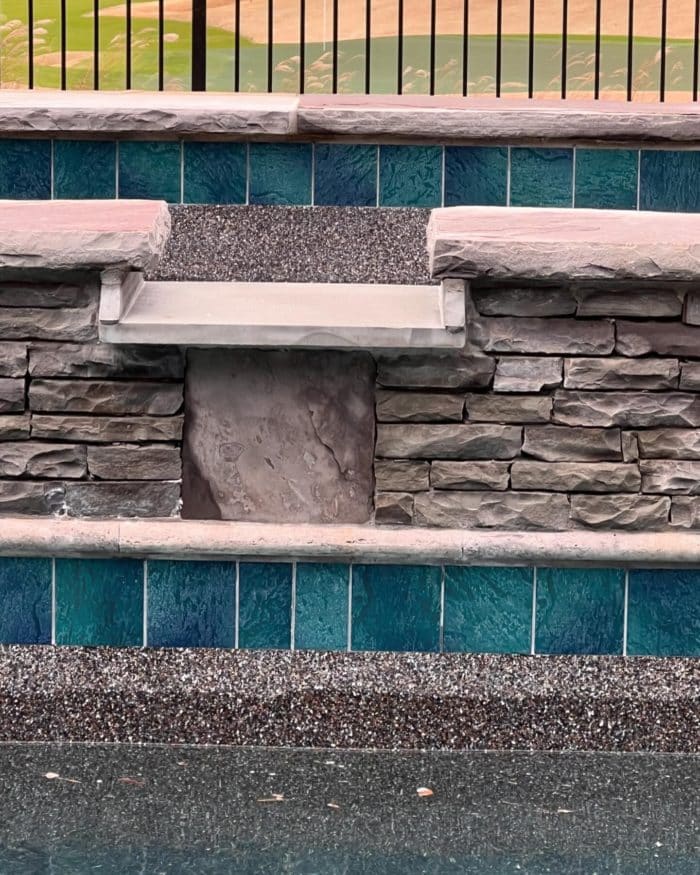
4. Heating and Electrical Issues
Proper temperature and safe electrical systems enhance the pool experience.
- Heater Hurdles: Malfunctioning heaters affect the comfort of swimming. Regular service checks can ensure efficient and safe operation. Ensure proper ventilation, clean filters, and check for gas supply or electrical connections.
- Electrical Safety: Faulty electrical systems pose serious risks. Ensuring that all electrical components are in good working order and up to code is essential for safety.
5. Neglected Safety Measures
Safety should never be compromised around swimming pools, especially if you have children or children come to visit your home. According to RubyHome 379 children under 15 years old drown in a swimming pool or spa each year and 71% of these occur at private residences.
- Fencing and Gates: Adequate fencing and self-locking gates prevent unauthorized access, particularly by children. It is recommended to install fences at least 4 feet high with self-closing, self-latching gates. As always, check your local code requirements and regulations for what is specifically required in your area..
- Slippery Surfaces: Wet areas around the pool can become slip hazards. Anti-slip coatings or anti-slip mats and regular cleaning can mitigate these risks.
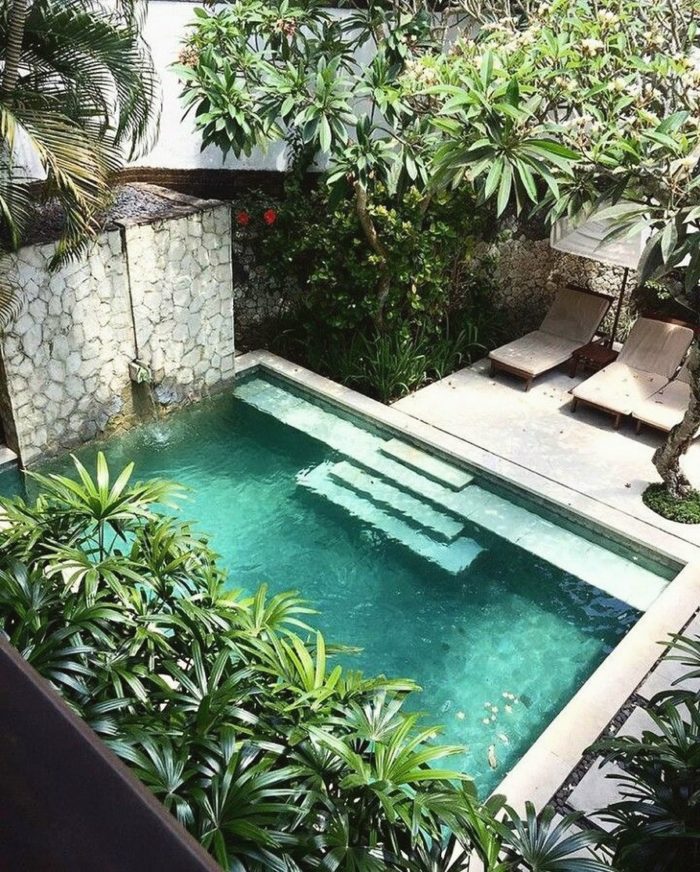
6. Equipment Ineffiencies
Operational equipment is key to maintaining a sparkling pool.
- Cleaner Complications: Automatic pool cleaners help keep the pool debris-free. Ensuring these devices are functioning correctly with regular maintenance, checking for blockages in hoses or filters, and ensuring the cleaner is properly adjusted for your pool size and shape can save time and maintain water clarity.
- Accessory Anomalies: From lights to ladders, maintaining pool accessories ensures a safe and enjoyable swimming environment and needs to be regularly checked and maintained.
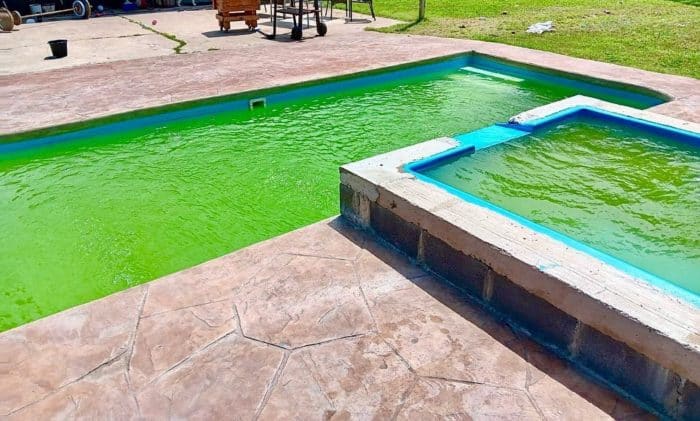
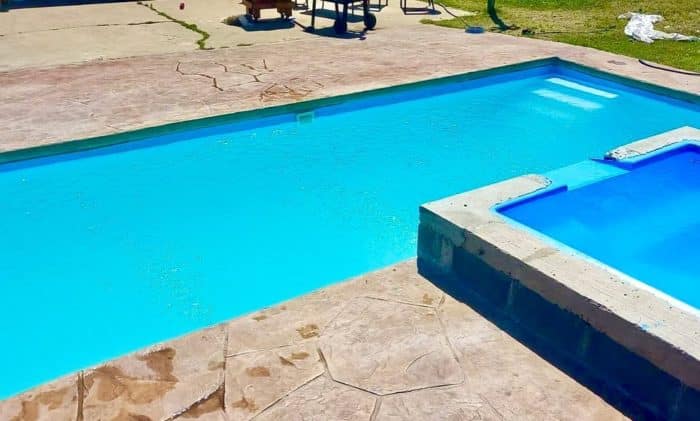
Owning a pool comes with the responsibility of upkeep to ensure it remains a source of pleasure rather than a pool of problems. Maintaining a swimming pool is an ongoing commitment that requires knowledge, vigilance, and sometimes a bit of elbow grease. By understanding the common issues, homeowners can take preemptive steps to maintain their pools in top condition, ensuring the safety and enjoyment of all who dive in. Regular maintenance, combined with a keen eye for early signs of trouble, can keep your pool safe and ready for enjoyment at any time.
Consult the Steps for Healthy Swimming guide by the CDC for a great reference on ways to protect all swimmers in the water.
